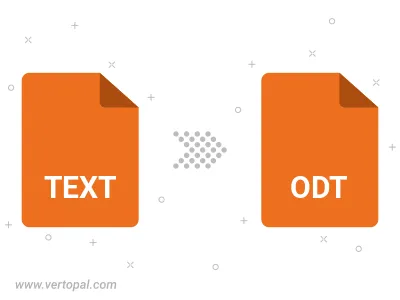Convert TEXT MARKDOWN to ODT
Convert TEXT MARKDOWN markup documents to ODT format, edit and optimize documents online and free.

A TEXT file extension, associated with Markdown Documentation, which simplifies writing and formatting text for web and technical documentation. Markdown, created by John Gruber in 2004, facilitates easy-to-read, plain-text documents that can be converted to HTML. It's essential for developers and writers to create structured documents quickly and efficiently, enhancing productivity and readability without complex code.
OpenDocument Text (ODT) is a file format used for word processing documents, standardized by the Organization for the Advancement of Structured Information Standards (OASIS). Originating in 2005, ODT facilitates interoperability across different word processing software. It supports various document components, such as text, images, and styles, making it ideal for professional document creation and exchange. Widely adopted in open-source office suites like Apache OpenOffice, ODT promotes the use of open standards in digital document management.
Select any TEXT MARKDOWN file from your device to start uploading it.
Before clicking the Convert button, use any available TEXT MARKDOWN to ODT tools.
Wait a few moments for the converter to complete its job, then download your ODT file.

To change TEXT MARKDOWN format to ODT, upload your TEXT MARKDOWN file to proceed to the preview page. Use any available tools if you want to edit and manipulate your TEXT MARKDOWN file. Click on the convert button and wait for the convert to complete. Download the converted ODT file afterward.
Follow steps below if you have installed Vertopal CLI on your macOS system.
cd to TEXT MARKDOWN file location or include path to your input file.Follow steps below if you have installed Vertopal CLI on your Windows system.
cd to TEXT MARKDOWN file location or include path to your input file.Follow steps below if you have installed Vertopal CLI on your Linux system.
cd to TEXT MARKDOWN file location or include path to your input file.